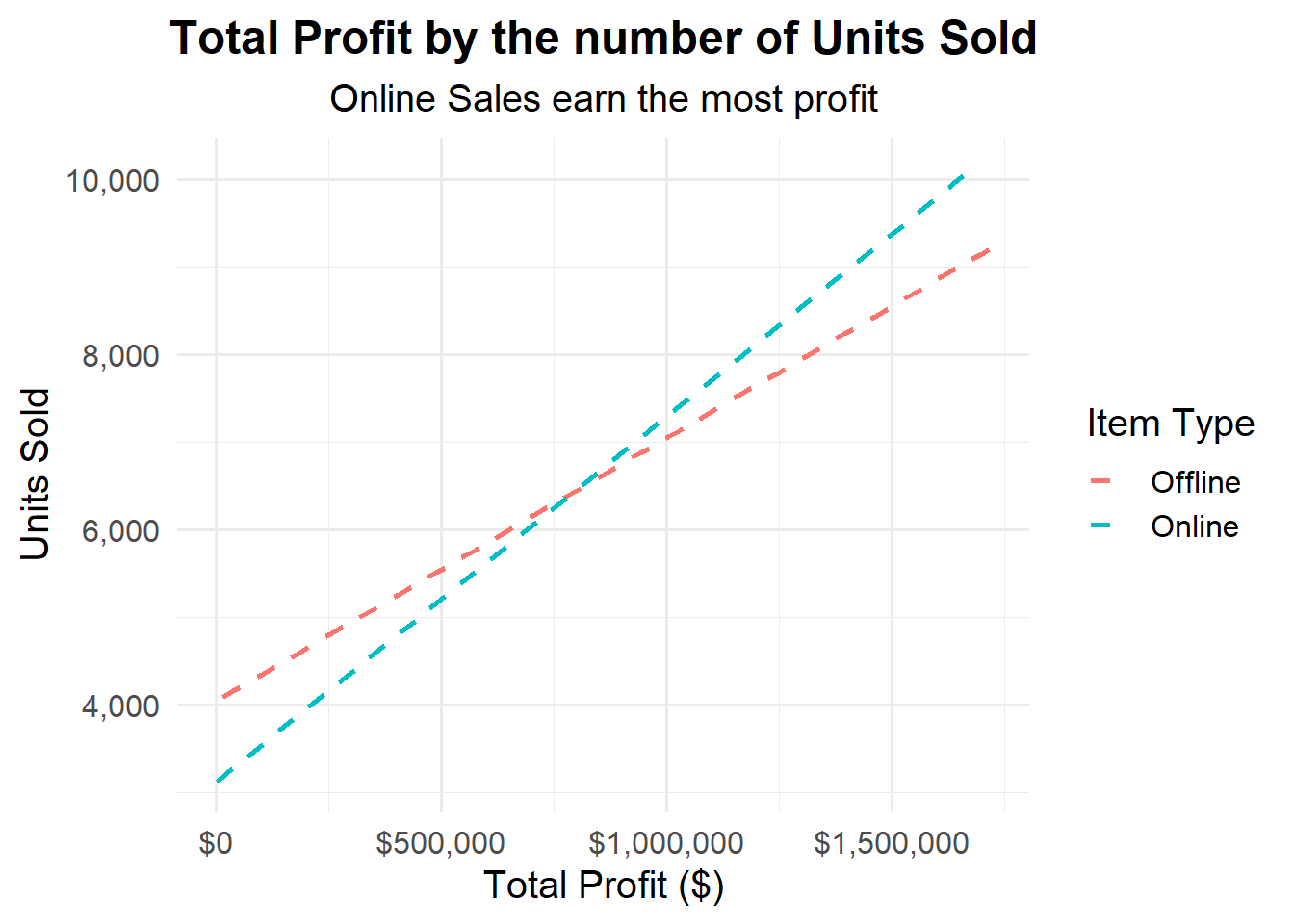
Amazon Sales Profit Prediction
Sales profits from preferred sales channels have grown significantly. I gathered data from the Amazon Sales Kaggle dataset, covering 100 sales from 2010 to 2019. Using this information, we predicted future sales profits based on two main sales channels: Online and Offline. We modeled Total Profit, a numerical variable, as a linear function of Order Year. As the years progress, profits appear to increase. In conclusion, sales profits on both Sales Channel combined are predicted to rise by 764 unit each year with uncertainty varying from as low as 153.64% and as high as 307.29%. These rates are subject to external factors that could influence Amazon’s profit margins.
Models to see which Sales Channel has more profit than the other
Let’s start by tackling a specific question before going onto our central/general question, The below plot shows what the total profit would be between the years of 2010 and 2017.
Plot for Online

Explanation
This graph visualizes the predicted total profit for the “Online” sales channel over various order years. The orange points represent individual predictions, while the maroon smooth line, created using a generalized additive model (GAM), illustrates the overall trend. The y-axis, ranging from -500,000 to 1,000,000, captures both potential losses and profits. The spread of points around the smooth line indicates variability in predictions, with the line suggesting whether profits are expected to rise, fall, or show a more complex pattern over time.
Plot for Offline

Explanation
This plot visualizes the predicted total profit for the “Offline” sales channel over various order years. Green points represent individual profit predictions, while a dark green smoothing line shows the overall trend using a generalized additive model (GAM). The y-axis, ranging from 0 to 800,000, highlights positive profits, with data filtered to exclude missing or extreme values. The plot, indicates how predicted profits for offline sales change over time, revealing both the trend and the variability in the model’s predictions.